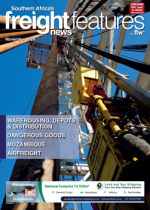There has been a consistent double-digit growth in demand for air cargo around the world, driven by e-commerce and disruptions caused by conf lict.According to Kawal Preet, FedEx Asia Pacific president, the upward trend in the Asia Pacific region has been more pronounced. Demand on the Africa-Asia trade lane grew by 40.6%. Europe-Asia, intra-Asia and Middle East-Asia trade lanes rose by 20.4%, 19.2% and 18.6% respectively. Capacity increased by 8.4% year-on-year (y-o-y). “A pattern of brisk momentum is emerging here and behind it all is commercial growth,” says Preet in a company briefing.The growth of e-commerce is ref lected in the 33% share that the Asia Pacific region has in the global air cargo market – many of the world’s biggest e-commerce suppliers and markets are in the region, including China.Trade and Transport Group estimates that e-commerce and low-value goods exports from China in the first seven months of 2024 increased by 30% y-o-y. Shipments to Europe increased by 38%, and the United States by 30%.Preet expects demand for airfreight to grow as peak Christmas season approaches.“Capacity crunches on the water in recent months have led to major trade disruption.“Most recently, what many are describing as a ‘perfect storm’ is set to hit the sea freight industry. “As peak shipping season began, the ongoing fall-out from the Red Sea shipping disruptions was further exacerbated by spates of bad weather in Asia. “The pressure placed on maritime cargo as a result has led to supply chain bottlenecks and a total removal of excess capacity in the market. “With the squeeze on ocean cargo set to continue, we can expect that air cargo demand will also stay strong.”As a result of the increased demand, the average spot rate for air cargo has risen sharply, despite an increase in capacity.In October, air cargo spot rates rose to their highest level in 2024, according to WorldACD, which analyses over two million transactions a month.The trend analysis is supported by Xeneta.“October is a whole new ballgame,” said Niall van de Wouw, Xeneta’s chief airfreight of f icer. “We could see rates rising very quickly on some trade lanes because of the fear-of-missing-out effect as air cargo capacity leaves the market for the winter, and conf lict is escalating in the Middle East, potentially bringing further Red Sea disruption for ocean freight.”He warns that airlines and freight forwarders now face a “fine balancing act” between protecting customer relationships and being tempted by short-term revenue gains offered by increasing market volatility. ER

